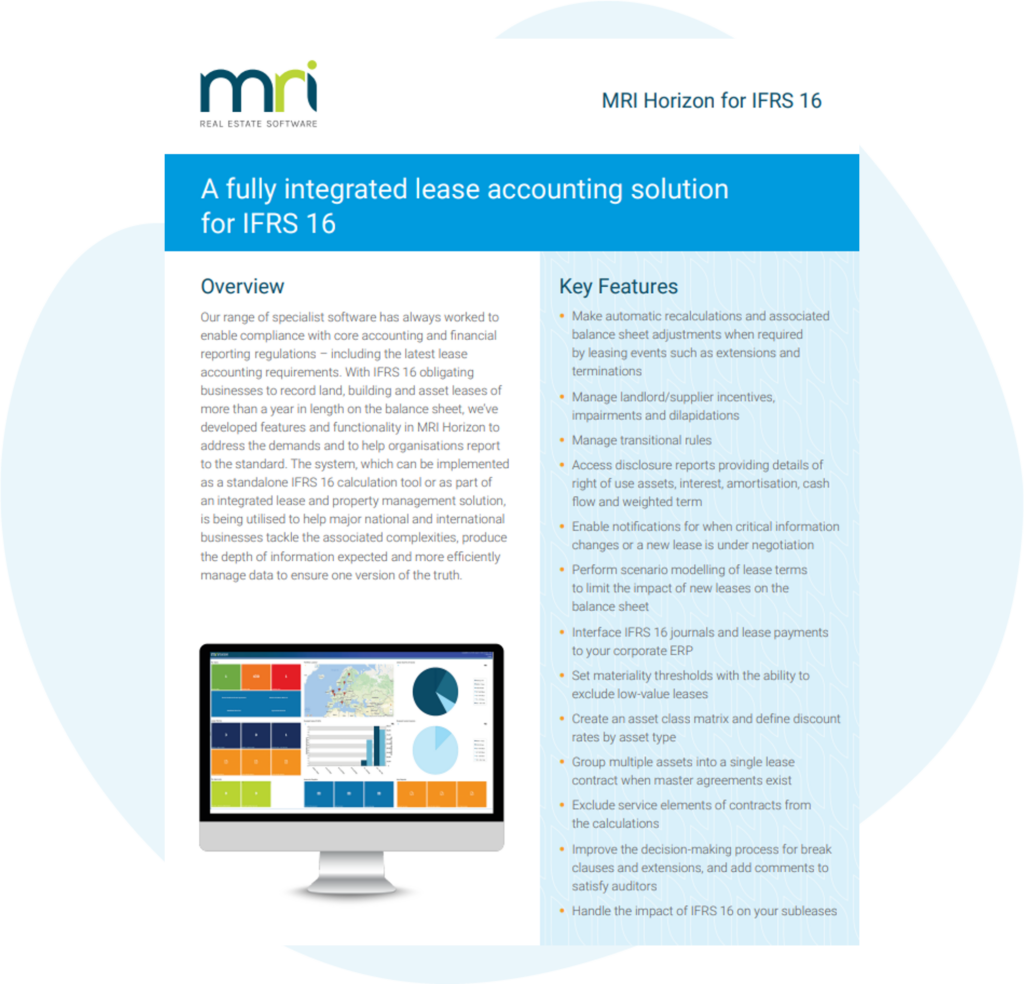Creating business-wide efficiencies with healthy lease data
As the old saying goes, “You can’t fatten a pig on market day.” So too is it with systems. If you are not ready now, then it is already too late.
With the increased level of business planning and reporting that occurs at the change of the financial year, it is the key time when teams discover just how accurate and complete their business data really is, often exposing flaws in the systems and processes by which it is managed. Incorrect or incomplete data can be a significant barrier in any business.
There is nothing more inefficient and frustrating than starting your reporting and realising that you either don’t have the data you need, or that it’s ‘dirty’ with errors. For those businesses, an annual data review and cleanse is required, taking too much time, costing more money and holding up everything else that relies on it in the meantime. At best, unreliable data wastes time, and at worst, leads to bad decisions.
The only true way to ensure that your business data and information is sufficiently maintained is to make sure that it is used constantly. Treating it as just an end-point repository to be accessed intermittently is just setting yourself up for data failure.
5 ways to keep your data clean
Good data is the light-force behind most successful businesses and maximising your data use keeps it real for everyone. Dirty data costs time and money and there are some key ways to avoid it happening in your team.
1. Ensure that there is clear ownership of the data within the business.
Without responsibility for its welfare, data (like almost anything), is likely to become lost, forgotten or something even worse. Determining who ‘owns’ the data will help to ensure that it is properly maintained.
2. Give full access to the people that need to use that data anytime, anywhere.
Data ’at rest’ is essentially worthless, it is only how it is used that generates any real value. The people that need it the most should have ubiquitous access to harness and monetise its value. Ultimately, they are the ones best placed to know if it is right or not and the more that they can use it, the more that it is tested and verified – so keep it visible.
3. Prevent data fragmenting through the business by creating a single centralised source for all users.
Perhaps the greatest risk to data is a lack of control. In a business there can be many reasons why certain information is needed across functions. Without the appropriate controls in place, you can end up with multiple versions of the truth across the business all being relied upon – what’s called Data Fragmentation, and it’s very hard to resolve quickly or easily.
4. Minimise the amount of manual updating and human error.
As an extension of a lack of control over data, the impact of too many humans ‘touching’ the data can be catastrophic to its protection. With source data, there is often a need for some form of human update or intervention. However, when transferring, migrating or maintaining data, operating with more automated processes and less manual handling will significantly prevent it from becoming corrupted.
5. Develop and document clear processes for how data should be updated.
This doesn’t just mean having sufficiently trained users, but agreeing on and documenting clear protocols for data maintenance. This includes clear workflows for who, when and how the data should be updated, and directions of what needs to happen (and how) if a master data point is edited.
Unlock data-driven benefits
As an extension of these key recommendations, businesses should also consider that the earlier in their evolution that they can implement effective systems and protocols, the better and easier it will be. The larger an organisation grows, the more data it will generate or require, the more people will need and impact it and the more complex the overall requirements will become. Fortunately, software today is far more accessible, affordable and scalable, so there’s a greater ability to adopt early and have it grow with your business.
With this in mind, and remembering that data should be used constantly in order to provide value, there are a few things that you should be doing to ensure your systems are prepared to operate effectively and provide your business with the best outcomes:
Data cleansing
Although it may be called many things, re-establishing that your data is okay is something that is ‘best practice’ at least annually. If your systems and processes are working correctly, then it shouldn’t take long. Just like if you keep on top of the cleaning at home, ‘the dirt’ doesn’t have a chance to build up. With the core of your data verified for completeness and accuracy, then you can move on to improving the ways in which it is utilised.
Creating efficiencies
Once your data is in the right state, developing ways to leverage or monetise it become high-value projects for most businesses. Looking back at our Top 5 recommendations, expanding the use and/or visibility of your data, and creating more automations are two of the easiest ways to generate more efficiencies. Features like customisable reports, automatic event alerts and automated approvals are going to not only utilise your data to it’s best extent but minimise manual workload and errors and improve overall efficiency.
Automating intelligence
I’ve talked already about leveraging or monetising data and it being an important way of creating value. Your systems should be able to offer security and access controls for all users, deliver the intelligence your people demand, with the security and control that the business needs. And just like recommendation #2, the more use that your data has the better it will survive.
Reporting is only useful if it can be done when you need it, for the right metrics. By creating custom report templates and scheduling them for delivery at your desired frequency, you can ensure benchmarking, analysis and other data intelligence information is in the right format for the right people at the right time.
Get the features you need to empower team efficiency and productivity
In order to benefit from the advantages of improved reporting efficiency and healthy data, you will need a system that supports this. Managing data in spreadsheets or through manual processes won’t give you the control, access or accuracy needed to maintain data quality, nor the automation required to create efficiencies.
MRI LeaseEagle lease management software not only takes the difficulty out of maintaining clean and accurate data, but simplifies the job of finance and property teams by automating reporting – ensuring your team have access to the data intelligence they need, when they need it.
Not designed to just rest as a ‘back of house’ system, MRI LeaseEagle is most valued when people are constantly accessing its information to support their day-to-day needs, whether that be Strategy Planning, Decision Support, BI Analysis, Financial Reporting or any other intelligence work the team requires.
As we continue to face a period of relative uncertainty, now is a good opportunity to take some time to review your current lease management processes, and to identify whether they support efficient reporting and add value for your organisation.
If you would like to learn more about MRI LeaseEagle lease management software, or have any feedback in regards to the article, reach out to MRI LeaseEagle today.
Workplace
Software solutions and services for workplace management, lease administration and lease accounting.
Get a Demo
A fully integrated lease accounting solution
for IFRS 16
In today’s dynamic financial landscape, achieving compliance with evolving accounting and reporting regulations is more critical than ever. MRI stands at the forefront of facilitating this compliance, particularly in light of the demands set fo…
